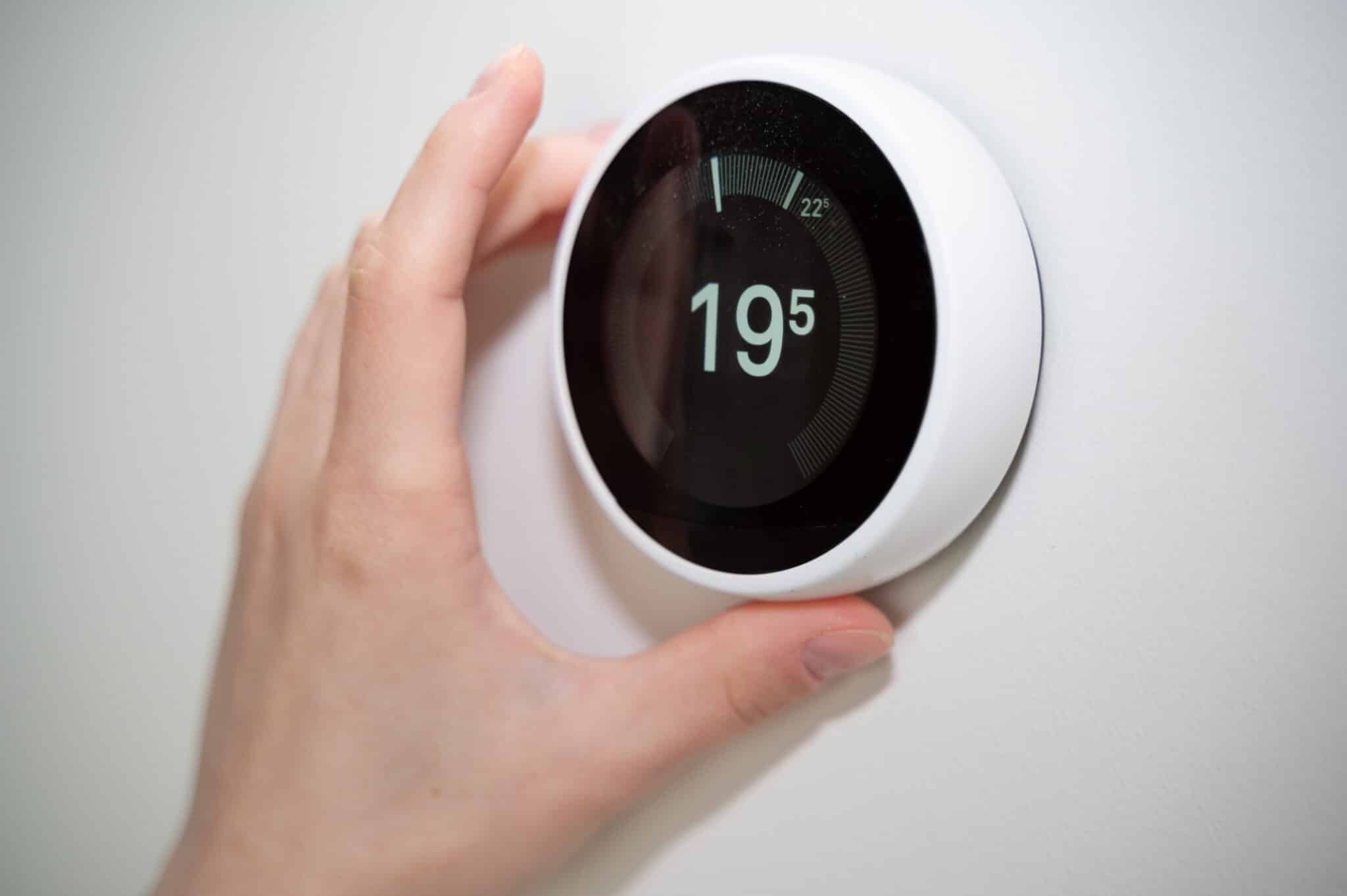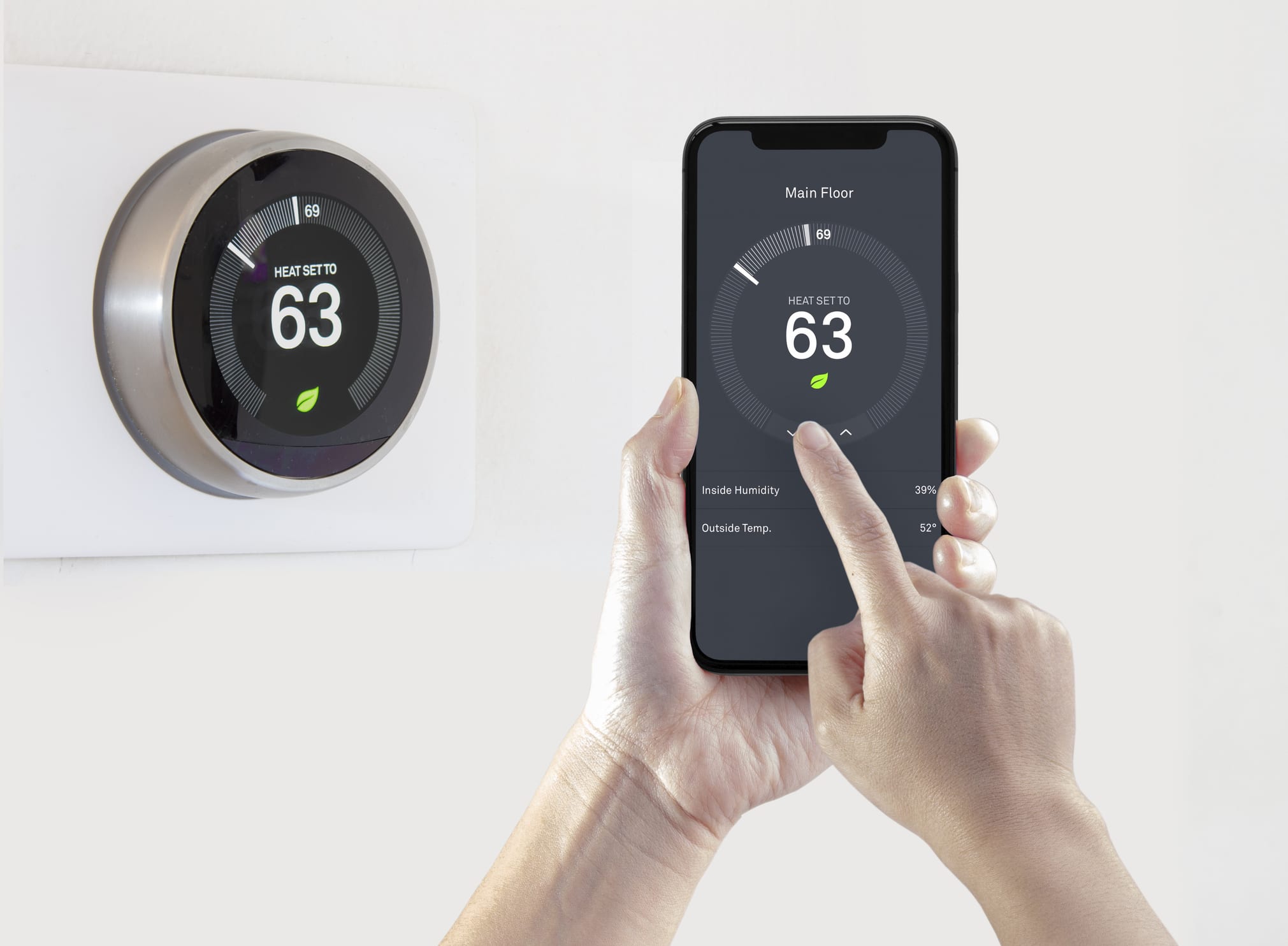Smart thermostat installation is becoming a must-have for homeowners in Springtown, TX, aiming to boost their HVAC efficiency and convenience. With the right approach, this upgrade can transform how you interact with your home’s heating and cooling system. It’s not just about adjusting the temperature from your smartphone; it’s about optimizing your home’s energy use and comfort. By keeping a few essential tips in mind, you can ensure your smart thermostat serves you well for years to come.
Residents of Reno, TX, and surrounding areas are quickly recognizing the benefits of smart thermostats. These devices learn your preferences, adjust to your schedule, and can even provide energy usage reports. For those considering smart thermostat installation, the journey to a more connected and efficient home is just beginning. It’s an investment in comfort, convenience, and energy savings.
In Azle, TX, homeowners are also jumping on the smart home bandwagon, with many opting for smart thermostat installation. The process involves more than just swapping out your old thermostat. It requires understanding your HVAC system’s compatibility, choosing the right model for your home, and ensuring it’s installed correctly. These steps are crucial in maximizing the potential benefits of your new device.
To navigate the smart thermostat installation process successfully, it’s essential to start with a solid plan. This includes researching different models, understanding the specific needs of your home, and possibly consulting with professionals. With the right preparation, your smart thermostat can become a central part of your home’s energy management strategy, offering both comfort and cost savings.
Understanding Smart Thermostat Installation Basics
Understanding the basics of smart thermostat installation is crucial for homeowners in Springtown, TX, and beyond. Before diving into the installation process, it’s important to verify that your HVAC system is compatible with the smart thermostat you’ve chosen. This step prevents potential issues and ensures the device can fully integrate with your existing system. Compatibility checks can save you time and enhance the efficiency of your heating and cooling systems.
Choosing the right smart thermostat for your home involves considering several factors. Think about the features that matter most to you, such as learning capabilities, remote access, and energy usage reports. Each model offers different benefits, so selecting one that aligns with your lifestyle and preferences is key. This thoughtful approach ensures you get the most out of your investment and truly enhances your home’s comfort and convenience.
Installation of a smart thermostat might seem straightforward, but it requires careful attention to detail. Following the manufacturer’s instructions is critical to ensure proper setup and operation. If you’re not comfortable with electrical work, seeking professional help is a wise choice. Professionals can handle the installation efficiently and provide valuable insights on optimizing your device’s performance.
Finally, integrating your new smart thermostat into your daily routine will maximize its benefits. Take the time to explore its features and customize settings to suit your schedule and preferences. Whether you’re in Reno, TX, or Azle, TX, learning how to use your smart thermostat effectively can lead to significant energy savings and improved home comfort. Embracing this technology allows you to enjoy a more connected and efficient living environment.

Choosing the Right Smart Thermostat for Your Home
When selecting the right smart thermostat for your home, the process extends beyond mere aesthetics or brand loyalty. It’s about understanding how a particular model fits with your lifestyle and home’s HVAC system. For instance, some smart thermostats excel in learning your temperature preferences over time, adjusting automatically to save energy while ensuring comfort. This feature is especially beneficial for busy households in Reno, TX, where managing energy use efficiently can make a significant difference in comfort and convenience.
Moreover, the ability to control your thermostat remotely is a game-changer for many homeowners. Whether you’re at work or on vacation, the peace of mind that comes with adjusting your home’s temperature from anywhere cannot be overstated. This feature is particularly appealing in Azle, TX, where weather conditions can change quickly. Choosing a model with robust remote access capabilities ensures you’re always in control, no matter where you are.
Energy usage reports are another critical factor to consider during the smart thermostat installation process. These reports can help you understand your energy consumption patterns, identify opportunities for savings, and make informed decisions about your heating and cooling usage. By selecting a smart thermostat that offers detailed energy insights, you can take a proactive approach to manage your home’s energy efficiency.
Finally, the installation process itself should influence your choice of a smart thermostat. Some models are designed for easy DIY installation, while others may require professional assistance. Consider your comfort level with electrical work and the complexity of your HVAC system before making a decision. Opting for a smart thermostat that aligns with your installation preferences ensures a smooth setup process, allowing you to enjoy the benefits of your new device without unnecessary hassle.
Preparing Your HVAC System for Smart Thermostat Installation
Before starting your smart thermostat installation, it’s essential to prepare your HVAC system to ensure it’s up to the task. This means checking for any updates or maintenance that might be needed. An HVAC system in top condition will work seamlessly with your new smart thermostat, enhancing its efficiency and effectiveness. Ensuring your system is clean and fully functional can prevent potential issues after installation.
Next, familiarize yourself with your HVAC system’s type and capabilities. Smart thermostats are versatile, but they require a compatible HVAC system to function correctly. This step is crucial for homeowners in Reno, TX, where HVAC systems vary widely. Knowing the specifics of your system helps in selecting a smart thermostat that will integrate smoothly, avoiding compatibility issues.
It’s also wise to consider the wiring of your current thermostat. Most smart thermostats require a C-wire to provide continuous power for their advanced features. If your home in Azle, TX, doesn’t have this wiring, you might need to install it or choose a model that comes with an adapter. Understanding your home’s wiring can guide you in making an informed decision, ensuring a smoother installation process.
Lastly, think about the location of your smart thermostat. It should be placed away from direct sunlight, drafts, doorways, windows, and anything else that could affect its temperature readings. A well-placed thermostat ensures accurate temperature control and energy efficiency. Proper placement, combined with a prepared HVAC system, sets the stage for a successful smart thermostat installation, paving the way for enhanced comfort and convenience in your home.
Step-by-Step Guide to Smart Thermostat Installation
Starting your smart thermostat installation begins with turning off the power to your HVAC system. This is a crucial safety step to prevent any electrical issues during the installation process. Next, carefully remove your old thermostat, taking note of where each wire is connected. Labeling each wire can help ensure they’re correctly attached to your new smart thermostat.
With the old thermostat removed, it’s time to install the new mounting plate. Most smart thermostats come with a level built into the mounting plate to assist with proper installation. Secure the plate to the wall, making sure it’s straight to ensure your thermostat functions correctly. This step sets a strong foundation for your smart thermostat, ensuring it’s well-positioned to monitor and adjust your home’s temperature efficiently.
Now, connect the wires to your new smart thermostat, following the manufacturer’s wiring diagram. If your home in Reno, TX, didn’t have a C-wire, and your chosen model requires one, you might be using an adapter or a new wire setup now. Ensuring each wire is firmly connected in the right place is key to the functionality of your smart thermostat. Double-check each connection to avoid any issues with your system’s performance.
Finally, attach your smart thermostat to the mounting plate and turn the power back on to your HVAC system. Follow the setup instructions provided by the manufacturer to connect your thermostat to your Wi-Fi network and complete any necessary configuration. This might include setting your temperature preferences and scheduling. Once set up, take time to explore the features of your smart thermostat, adjusting settings as needed to maximize your home’s comfort and energy efficiency.
Tips for Optimizing HVAC Efficiency with Smart Thermostats
After successfully installing your smart thermostat, optimizing its settings to enhance HVAC efficiency is the next critical step. Begin by programming your thermostat based on your daily schedule and typical temperature preferences. This smart device learns from your habits over time, making automatic adjustments to save energy while maintaining comfort. For instance, setting it to lower the temperature when you’re usually away from your Reno, TX home can lead to significant energy savings.
Another effective strategy is to utilize the energy reports most smart thermostats provide. These reports give you insights into your heating and cooling usage, highlighting opportunities to cut down on energy consumption. By analyzing these reports, you can make informed adjustments to your settings, further optimizing your home’s energy efficiency. This is especially useful in Azle, TX, where the climate can vary, affecting how often your HVAC system needs to run.
Additionally, take advantage of the remote access feature that comes with most smart thermostats. This allows you to adjust your home’s temperature from anywhere, ensuring that you’re not heating or cooling an empty house. It’s a convenient way to make sure your HVAC system is only working when it needs to, adding to the overall efficiency of your home’s energy use.
Lastly, keep your smart thermostat’s software up to date. Manufacturers often release updates that improve functionality and efficiency. Regular updates can enhance the thermostat’s learning capabilities, ensuring it continues to optimize your HVAC system’s performance. Staying on top of these updates will ensure your smart thermostat installation continues to contribute to a more energy-efficient and comfortable home.
Troubleshooting Common Smart Thermostat Installation Issues
Even with careful installation, some homeowners in Springtown, TX, may encounter issues with their smart thermostat installation. A common problem is the device not turning on, which often stems from incorrect wiring. Double-checking that each wire is securely connected to the correct terminal can resolve this issue. If the problem persists, consulting the manufacturer’s support resources or seeking professional help is advisable.
Another issue that may arise involves the thermostat not connecting to Wi-Fi. This connectivity is crucial for accessing remote features and updates. Ensuring your home’s Wi-Fi network is stable and the signal strength is sufficient at the thermostat’s location can help. Sometimes, simply restarting your router or the thermostat itself can establish a successful connection.
In Reno, TX, residents might find their smart thermostat isn’t accurately reading the temperature. This can be due to improper placement, such as near windows, doors, or in direct sunlight. Relocating the thermostat to a more central location in your home, away from these factors, can improve its accuracy. It’s also worth checking for any firmware updates, as these can enhance the device’s performance and temperature sensing capabilities.
Lastly, some users in Azle, TX, may notice their HVAC system cycling too frequently or not enough. This issue could be related to the smart thermostat’s settings. Adjusting the temperature differential setting can help. This setting determines how much the indoor temperature can deviate from the setpoint before the system turns on. Fine-tuning this setting ensures your HVAC system runs efficiently, providing comfort without unnecessary energy use.
Integrating Smart Thermostats with Home Automation Systems
Integrating your smart thermostat with a home automation system takes your HVAC efficiency to the next level. By doing so, you create a seamless ecosystem where your heating and cooling needs adjust automatically based on your habits and preferences. This advanced setup not only enhances comfort but also contributes to significant energy savings. Homeowners in Reno, TX, find this integration particularly useful, as it allows for more precise control over their home environments.
Setting up this integration often begins with ensuring your smart thermostat is compatible with your existing home automation devices. Most modern smart thermostats are designed to work well with a variety of systems, making them a versatile addition to your smart home. Once compatibility is confirmed, the actual process of connecting your devices usually involves following a series of simple steps provided by the manufacturers. This straightforward approach ensures that even those new to home automation in Azle, TX, can achieve a successful setup.
After connecting your smart thermostat to your home automation system, customizing settings to fit your lifestyle is key. You can program scenarios where the temperature adjusts based on time of day, occupancy, or even when certain doors are opened or closed. These intelligent adjustments not only improve the comfort of your living space but also optimize energy use throughout your home.
Lastly, maintaining an up-to-date system is crucial for ongoing efficiency and performance. Regularly updating your smart thermostat and home automation system ensures you benefit from the latest features and improvements. This proactive approach keeps your home at the forefront of smart technology, offering both convenience and efficiency that align with today’s fast-paced lifestyle.
The Impact of Smart Thermostat Installation on Energy Bills
Smart thermostat installation significantly reduces energy consumption, leading to more manageable energy bills for homeowners in Springtown, TX. By learning and adapting to your schedule and preferences, these devices ensure your HVAC system operates only when needed. This efficiency not only conserves energy but also extends the lifespan of your heating and cooling systems. Residents in Reno, TX, have observed a noticeable difference in their energy usage after making the switch to smart thermostats.
Moreover, the ability to remotely control your thermostat adds another layer of energy savings. Adjusting the temperature while you’re away from home prevents unnecessary heating or cooling. This feature is particularly appreciated in Azle, TX, where the weather can change unexpectedly. Homeowners find peace of mind knowing they can always come back to a comfortably heated or cooled home without wasting energy throughout the day.
The energy reports provided by smart thermostats offer insightful data into your home’s energy habits. These reports help identify areas where energy usage can be reduced, encouraging a more conscious approach to heating and cooling. In turn, this can lead to more strategic and efficient use of your HVAC system, further reducing energy bills. Homeowners across Springtown, TX, have used these insights to make smarter decisions about their energy consumption.
Lastly, the cumulative effect of smart thermostat installation on energy bills cannot be overstated. By optimizing HVAC system performance, enabling remote control, and providing valuable energy usage insights, smart thermostats play a crucial role in modern energy management. As more residents in Reno, TX, and Azle, TX, embrace this technology, the collective impact on energy conservation and efficiency continues to grow, marking a significant step forward in sustainable living.

Frequently Asked Questions
What tools are needed for Smart Thermostat Installation?
For a smooth smart thermostat installation, a few basic tools are essential. You’ll need a screwdriver, usually a Phillips head, to secure the device. A level ensures your thermostat is perfectly aligned for optimal operation. Some installations might require a drill if new holes are necessary. Lastly, wire strippers can be handy for preparing your thermostat’s wiring connections. These tools help ensure a successful setup, enhancing your HVAC system’s efficiency and convenience.
How do I choose the right smart thermostat?
Choosing the right smart thermostat involves considering your HVAC system’s compatibility. Look for models that match your system’s specifications. It’s also important to think about features you want, like remote access or energy usage reports. Ensure the thermostat can integrate with your home’s Wi-Fi for easy control. Finally, consider user reviews to gauge reliability and performance, ensuring a wise choice for smart thermostat installation.
Can I install a smart thermostat myself?
Yes, you can take on smart thermostat installation by yourself if you’re comfortable with basic tools and following instructions. Ensure you carefully read the manufacturer’s guide to avoid any setup mistakes. Remember to turn off your HVAC system’s power before starting to ensure safety. If you encounter any complex wiring or compatibility issues, it might be wise to seek professional help.
What are common mistakes in Smart Thermostat Installation?
One common mistake during smart thermostat installation is not turning off the power, which can lead to safety hazards. Another error is incorrect wiring, which may cause the system to malfunction or not work at all. People often overlook the importance of ensuring their HVAC system is compatible with the new thermostat. Lastly, failing to follow the setup instructions carefully can result in improper installation, affecting the device’s efficiency and performance.
How long does installation typically take?
Typically, smart thermostat installation takes about 30 minutes to an hour. This timeframe can vary based on your experience with DIY projects and the complexity of your HVAC system. If you’re familiar with basic wiring and follow the instructions closely, you’ll likely be on the shorter end of this range. However, if you run into unexpected issues or need to carefully review the setup process, it might take a bit longer.








